Jeep history the most recognizable vehicles in the world, an All-American workhorse designed to go anywhere—mountain passes, deep forests, high deserts, and even underwater! This is everything you need to know to get up to speed on the Jeep!
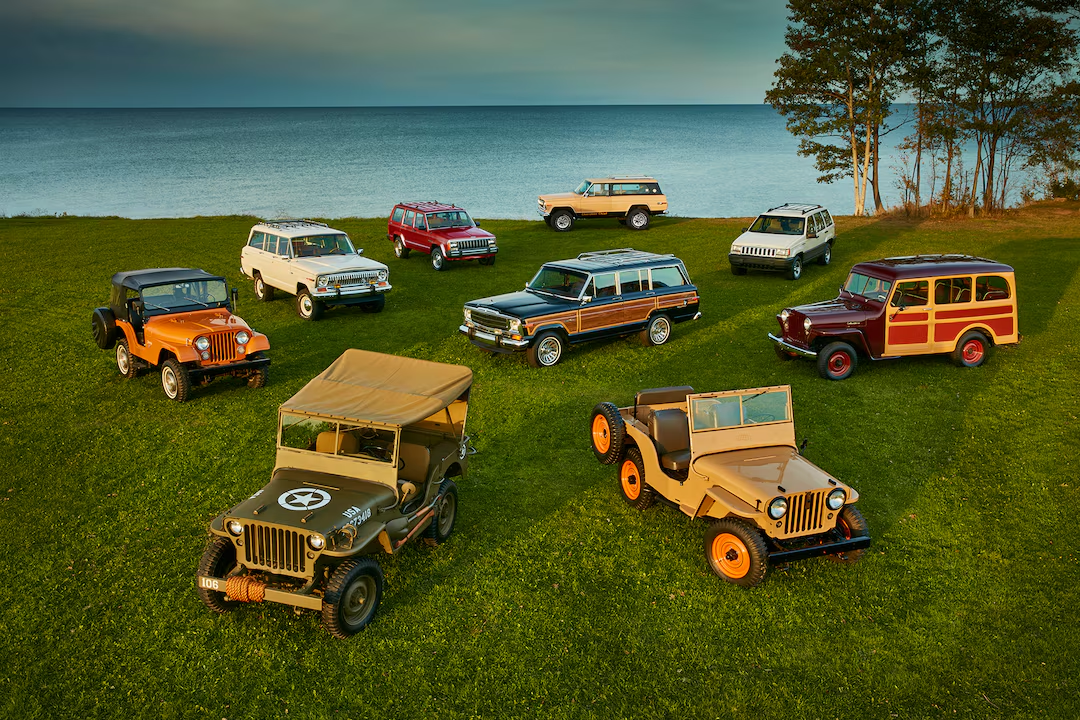
The Origins: WWII and Willys-Overland
Our story begins near the end of World War II. The Willys-Overland Company, having produced the Jeep MB for the war, anticipated a drop in sales as the conflict drew to a close. They needed to adapt their rugged war machine for the civilian market. Thus, the Civilian Jeep (CJ) was born.
1945: CJ2A
- The first civilian Jeep featured modifications like a tailgate, larger headlights, and a different transmission. Despite its utility, it wasn’t an immediate hit. People wanted more comfort.
1949: CJ3A
- Addressing comfort, the CJ3A offered better seats and more legroom. Unfortunately, sales didn’t pick up as hoped.
The Kaiser Era: Expansion and Innovation
Enter Henry J. Kaiser, an industrialist and founder of Kaiser Permanente. Kaiser bought Willys-Overland in 1953, continuing Jeep production under the Willys nameplate.
1953: CJ3B
- The CJ3B brought more power with its Hurricane engine, requiring a larger hood and marking the beginning of Jeep’s bulkier designs.
1955: CJ5
- The CJ5, the first Jeep designed under Kaiser, focused on universal utilitarianism, becoming a hit with civilians and starting Jeep culture as we know it.
1956: CJ6
- Alongside the CJ5, the CJ6 offered a longer wheelbase but wasn’t as popular in the U.S.
The AMC Years: Modernization and Growth
In 1970, Kaiser sold the Jeep brand to American Motors Corporation (AMC), aiming for a more mainstream market presence.
1976: CJ7
- The CJ7, introduced for the bicentennial, was longer, more comfortable, and equipped with the Quadra-Trac four-wheel-drive system. It became an immediate sales hit.
1981: CJ8 Scrambler
- A long-wheelbase truck version of the CJ7, the Scrambler featured a short bed and removable roof but saw limited sales.
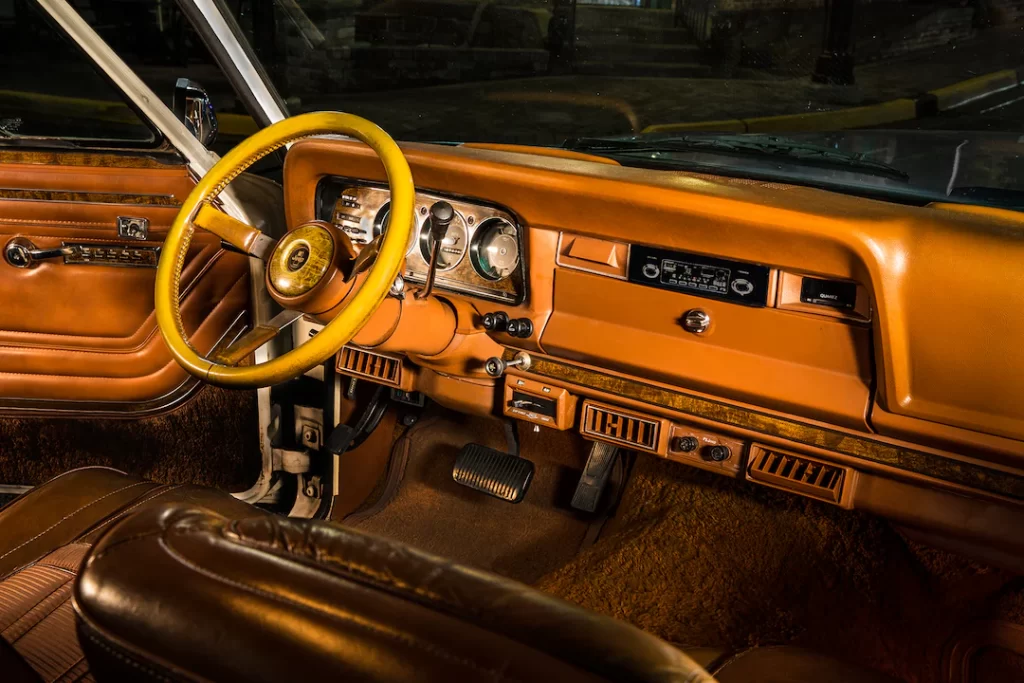
The Chrysler Era: Evolution and Mainstream Success
The end of the CJ line came in 1986, as Chrysler acquired Jeep from AMC. The new era began with the introduction of the Wrangler.
1987: YJ Wrangler
- The YJ Wrangler marked a departure from the CJ with its square headlights and a focus on road comfort. Jeep mania took off, cementing its place in mainstream culture.
1997: TJ Wrangler
- The TJ brought back round headlights and introduced coil springs for better off-road performance. The Wrangler Unlimited, introduced in 2004, featured a longer wheelbase.
2007: JK Wrangler
- The JK Wrangler introduced a new body and chassis, with a notable addition: the four-door Wrangler Unlimited, which became a significant portion of Jeep sales.
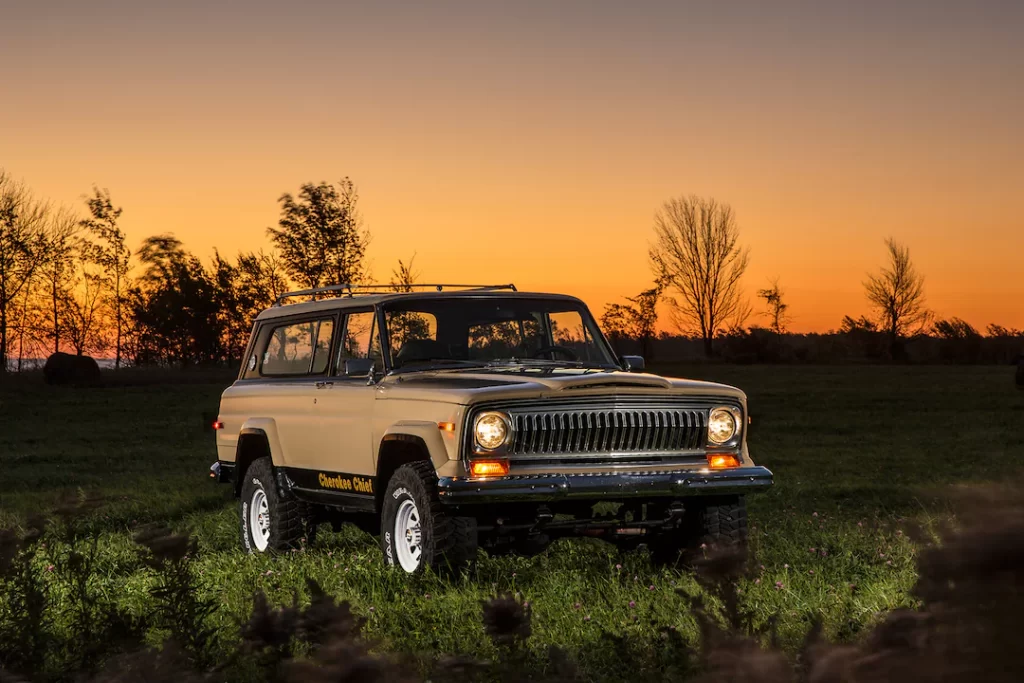
The Fiat Chrysler Era: Globalization and Modernization
The 2008 economic crisis led to Fiat acquiring a stake in Chrysler, eventually taking full control in 2014. Fiat aimed to globalize Jeep, making it a key player in the automotive world.
2018: JL Wrangler
- The latest Wrangler model, the JL, continues Jeep’s legacy of off-road capability and rugged utility, combined with modern comforts and technologies.
Jeep Today: A Global Icon
Today, Jeep remains a cornerstone of the automotive world, embodying the spirit of adventure and resilience. From its wartime origins to its present-day status, Jeep has continually evolved, ready to tackle any terrain, just as the Willys-Overland Company envisioned.
For more detailed history and insights on Jeep’s journey, check out these resources:
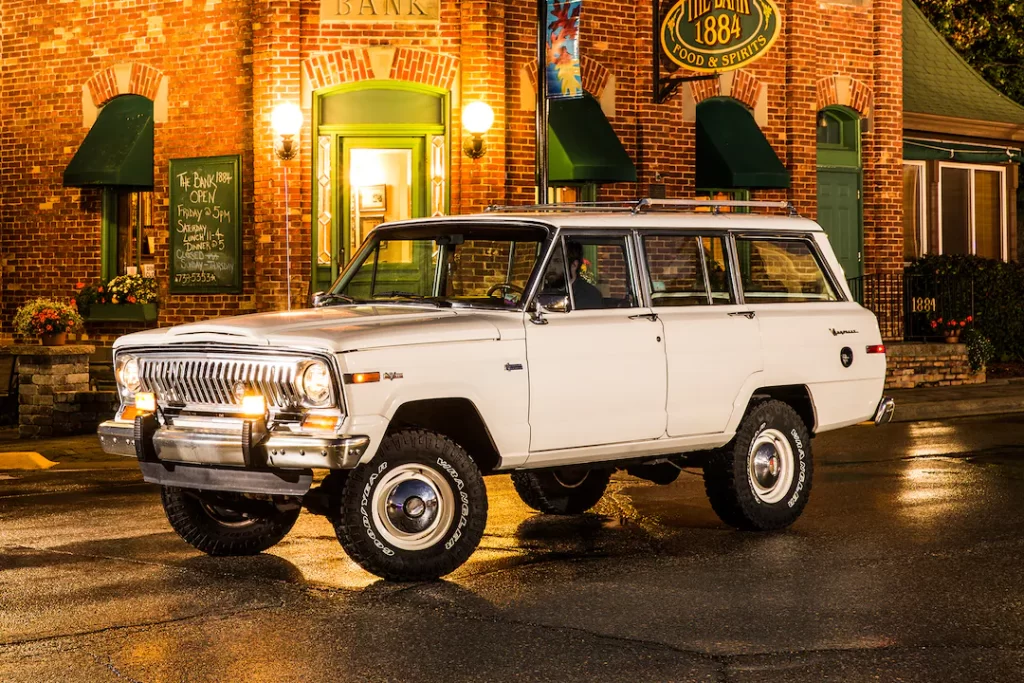
Jeep History: Beyond the Basics
Jeep’s legacy extends far beyond its iconic models and pivotal moments already discussed. To fully appreciate Jeep’s rich history, let’s dive into some lesser-known chapters and innovations that have shaped this legendary brand.
The Jeep Wagoneer: The Birth of the Luxury SUV
1963: Jeep Wagoneer
- Long before the term “SUV” became popular, Jeep introduced the Wagoneer, a revolutionary vehicle that combined the ruggedness of a Jeep with the comfort and style of a passenger car. The Wagoneer featured an independent front suspension, power steering, and automatic transmission, setting a new standard for versatility and comfort.
1984: Grand Wagoneer
- The Grand Wagoneer took luxury to new heights with leather seats, air conditioning, and a wood-paneled exterior. It became a symbol of prestige and off-road capability, beloved by families and outdoor enthusiasts alike.
The Jeep Cherokee: A Compact SUV Pioneer
1974: Jeep Cherokee (SJ)
- Initially a two-door variant of the Wagoneer, the Cherokee quickly gained its own identity. It catered to a younger, more adventurous crowd, blending Jeep’s off-road prowess with a sporty design.
1984: Jeep Cherokee (XJ)
- The second-generation Cherokee was a game-changer, introducing the world to the compact SUV. Its unibody construction provided a smoother ride and better fuel efficiency while maintaining Jeep’s signature off-road capabilities. The XJ Cherokee set the stage for the modern SUV market.
Military Might: Jeep’s Continued Service
1950s: M38 and M38A1
- Post-WWII, Jeep continued to serve the military with models like the M38 and M38A1. These vehicles featured improved waterproofing and electrical systems, making them more reliable in harsh conditions. The M38A1’s design later influenced the civilian CJ-5.
1980s: Jeep J8
- In the 1980s, Jeep developed the J8, a military version of the Jeep Wrangler. Built for durability, the J8 featured reinforced suspension, enhanced payload capacity, and optional armor plating. It remains in use by various military forces around the world today.
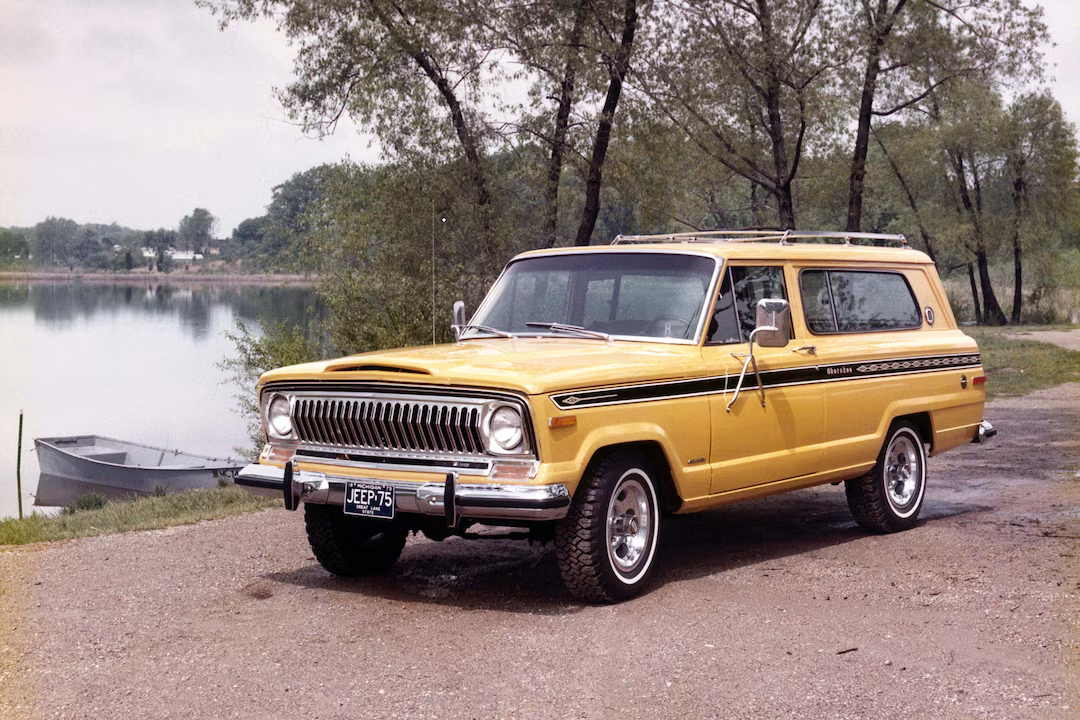
Jeep’s Concept Vehicles: Pushing Boundaries
1997: Jeep Icon
- Unveiled at the 1997 North American International Auto Show, the Jeep Icon was a concept vehicle that paid homage to the original Willys MB while incorporating modern design and technology. Though it never went into production, the Icon influenced future Jeep designs, blending retro aesthetics with contemporary features.
2005: Jeep Hurricane
- The Jeep Hurricane was an engineering marvel with dual HEMI V8 engines and four-wheel steering. It showcased Jeep’s commitment to innovation and off-road dominance, boasting a 0-60 mph time of under 5 seconds and unparalleled maneuverability.
Environmental Efforts: Jeep’s Green Initiatives
2008: Jeep Renegade Concept
- The Renegade Concept was a forward-thinking hybrid vehicle with electric motors and a small-displacement diesel engine. It emphasized Jeep’s commitment to environmental sustainability without compromising off-road performance.
2021: Jeep Wrangler 4xe
- Jeep entered the plug-in hybrid market with the Wrangler 4xe. Combining electric power with traditional Jeep capabilities, the 4xe offers impressive fuel efficiency and reduced emissions, appealing to eco-conscious adventurers.
Global Expansion: Jeep Around the World
1980s: Jeep in China
- Jeep became one of the first American automotive brands to establish a manufacturing presence in China. Partnering with Beijing Automotive Industry Corporation, Jeep began producing the Cherokee (XJ) for the Chinese market, setting the stage for its global expansion.
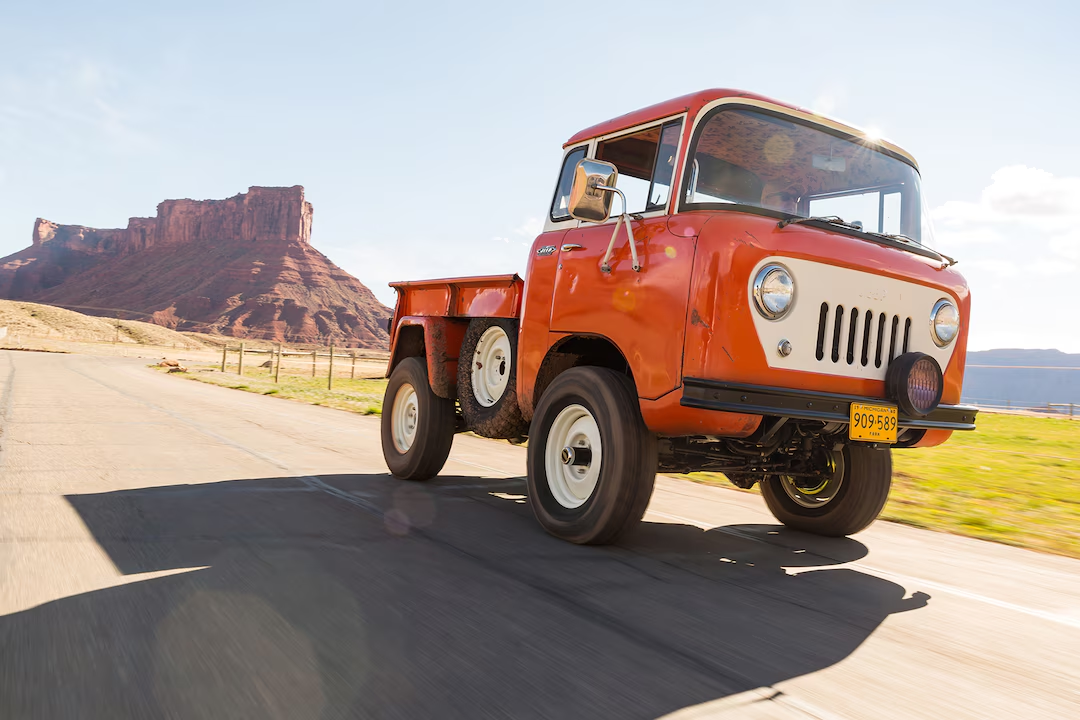
2010s: European and Asian Markets
- Under Fiat Chrysler Automobiles (FCA), Jeep intensified its global reach. Models like the Jeep Renegade and Compass were designed with international markets in mind, featuring compact sizes and fuel-efficient engines popular in Europe and Asia.

Jeep’s evolution is a testament to innovation and adaptation, capturing the hearts of adventurers and everyday drivers alike. So, what’s your favorite Jeep memory? Share it with us and keep the adventure going!
